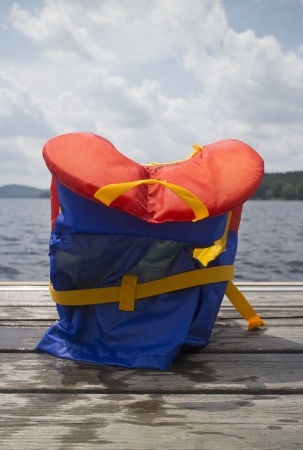

Lake Swimming Safety Tips!
It’s almost swimming season in the Pacific Northwest but you should know that lake swimming is different than swimming in a swimming pool. The unknown factors of swimming in a lake can get people into trouble. These factors include water depth which can change from area to area; water temperature which can vary depending on the amount of glacier runoff that year; the type of lake bottom such as sandy or full of reeds; and who you are sharing the lake with that day such as boaters and water skiers. Watch for safety signs or instructions and use these lake swimming safety tips to help keep you safe!
Lake Swimming Safety Tips
Identify Lake Conditions
It is best to know if the lake you are going to swim in has glacier run-off and could be very cold. Identify the water temperature before you head in to swim. Do not dive into the lake unless the water depth is clearly marked. Learn to recognize lake wave actions as lake rip tides can pull swimmers under very quickly. Many remote lakes do not have cell phone service so you may want to identify where the emergency call boxes and rescue equipment are located.
Always Swim with a Friend
Even if there are many other boaters and swimmers on the lake, it is not wise to go swimming without a friend or in a group. Keep track of people within your group to make sure everyone is safe.
Follow the Rules
Look out for rule signs posted for swimmers around the lake. You can also look for written guidelines such as pamphlets often found in ranger stations or local convenience stores. On most lakes that allow boaters and swimmers there will be buoys and ropes to separate the swimmers for their safety. Do not bring glass bottles to the beach or into the water because they could break and cause a cut.
Watch For Weather Hazards
Read or listen to a weather report for the lake area before you set out for the day. If there is a risk of thunder showers that day, take a portable battery-operated radio to listen for weather alerts. Leave the water the first time you hear thunder and don’t re-enter the water until at least 20 minutes after the last clap of thunder is heard. Evacuate the beach if you see lightning.
Keep Children Safe
If you take children to swim in a lake, keep them within your grasp at all times. Lakes may have strong underwater currents that can catch kids by surprise and pull them under in seconds. Children should always wear life vests in or while playing near the water. Watch for signs of over-heating and keep them well-hydrated. Use a beach umbrella to provide shade and a cool place for children to rest between swims.
If you or a loved one were injured in an accident, you have enough to deal with. Let an experienced accident attorney fight for the full compensation that you deserve. It is not uncommon to receive a settlement from the insurance company that is five to ten times bigger with the help of a lawyer. Call the caring accident attorneys at Tario & Associates, P.S. in Bellingham, WA today for a FREE consultation! We have been representing residents of Whatcom County, Skagit County, Island County and Snohomish County since 1979. You will pay nothing up front and no attorney fees at all unless we recover damages for you!




